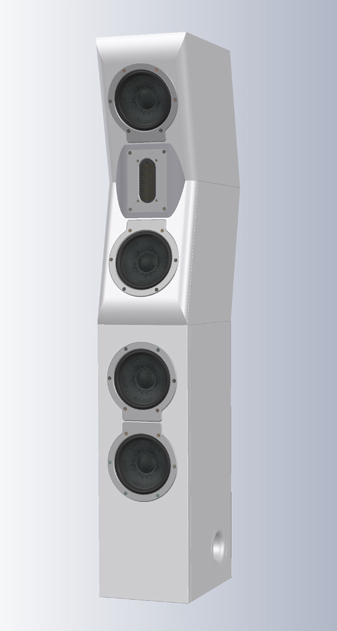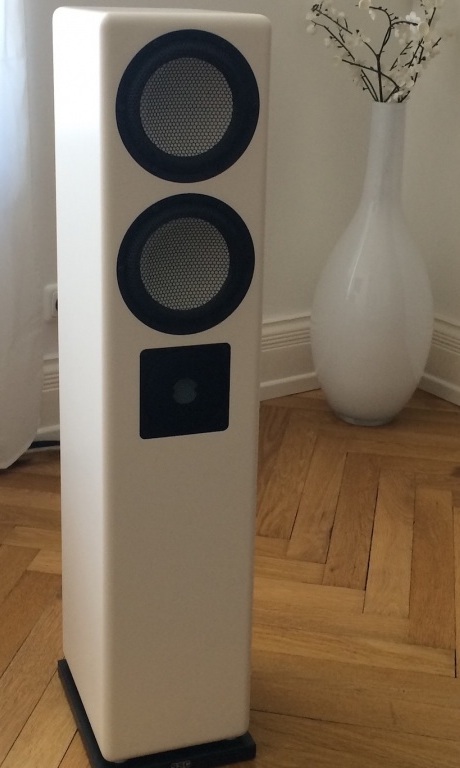Time Correct Hearing In Space
Space and listening distanceA sound document contains more or less distinct spatial information about the original acoustic environment. In the ideal case of perfect reproduction of a recorded sound event, there are no reflections through a listening room. In practice, this ideal case does not exist. A playback room adds its own, further room characteristics. The time window for the room-independent direct sound covers a very short time span of a few milliseconds (transients). So what is the sound-relevant information?
Depending on the room conditions, the proportion of "room-independent" sound (direct sound) will be more or less. We can only compensate for room acoustics to a limited extent. The listener's head is located at a certain place in the room. Only if we always place it at exactly the same point in the room will there be a modest chance of success. Sliding into a chair or changing seats while listening in a relaxed manner, however, turns all corrective measures on their head. And if several people want to listen at the same time?
You could still tinker with the speaker - but for which of the myriad room acoustics? There are almost as many different rooms as there are homes. So what are commonalities in the living spaces of the group of people buying a particular loudspeaker? One thing all living spaces have in common is a floor. This is very close to the acoustic centres for floorstanding speakers and for compact speakers on a stand. In the user's home, the floor is an ever-present boundary surface with a significant effect on bass response. It follows: Loudspeakers should have a clear vertical focus.
If you are building your own house, you can try to find an architect who designs rooms in such a way that they do not have parallel walls. Just a few degrees of slant to each other will do wonders. Not only when listening to loudspeakers, but any noise then builds up less. |
|
The sound structures arriving at the listening position consist of the direct sound components, which are unaffected by the room (exception: low frequencies), and the indirect sound components, which are changed by the reflection. The low frequency range is the area where the first reflections are already superimposed on the transient response. Here there is virtually no unaffected direct sound component left. As an example, consider a 3-way transducer, the Myro Time 2. With the size of this loudspeaker and the necessary larger measuring distance you can see (left) very nicely the first room reflection and its superposition of the step response. If the listening distance is small and the distance between the loudspeaker and reflecting surfaces is large, the direct sound component is large.
|
The deformations of the sound waves during the reflection process are extraneous influences, as is the deformation due to incoherent sound transducers. But errors in the reproduction also propagate in the room acoustics:
- Room reflections of faithfully transduced sound structures sound like reflections of the original.
- Room reflections of sound structures that have not been faithfully converted do not sound like reflections of the original.
For the decay of instruments or for continuous tones, the interaction of the listening room with the sound emitted by the loudspeaker plays the decisive role in addition to the direct sound component, because especially in the steady state, the interaction of loudspeaker and room determines what happens. To achieve this, a loudspeaker should of course have a sound structure that is as consistent as possible under different dispersion angles. The organ is the best example of an instrument with a high level in the steady state, and it is precisely here that the interaction of loudspeaker and room takes effect.
 Myro Grand Concert II Design Study |
Ultimately, what counts is the sound structure that arrives / takes effect at the auditory organ. The direct sound component, although proportionally smaller than the indirect sound, has a greater importance in rooms, because only in it room-independent information about the original is contained. The recognition and localization of sound events within the original (recording), i.e. also the recognition of the original room sound, is only clearly possible in direct sound. The next most important are the early, briefly following, energetic, first reflections. Everything that reaches our hearing organ after multiple reflections and attenuation tends to get lost in the general chaos of reflections and is of secondary importance. The listening experience with signal / time accurate loudspeakers is: Due to the excellent intelligibility and the detachment of the sound from the loudspeaker, the perception of the original information gains dominance over the perception of the listening room. The direct sound is of clearly superior importance for the perception of the original sound. Quantitatively, this experience cannot be justified, because the direct sound amounts to only about one fifth of the total sound. For locating and recognizing a sound structure stored in a recording, the following order of priority therefore applies: 1. direct sound (transients)
2. first early reflections
3. multiple reflected sound components (reverberation)
4. quasi steady states (space modes)
which act as frequency-filters and transform certain sound-parts into mechanical vibrations and heat. The mechanical vibrations in turn act as sound sources and are not insignificantly involved in the sound of the room. In all considerations, the only thing that counts is the quality of the sound structure. First early reflections, which superimpose the transient processes, are next to the strong dynamic compression in some recordings at the top of the list of factors that can relativize the advantage of the signal / time accurate conversion. For playback with loudspeakers, the following therefore applies:
|
For the reproduction with loudspeakers applies:
- optimization of room acoustic parameters, speaker placement, seating position, etc.
- a reproduction of the direct sound component as perfect as possible. Here, too, the transient response is of particular importance.
- as little loudspeaker sound as possible in the direction of nearby room surfaces
- as evenly directed radiation behaviour of the loudspeaker as possible
Can room correction help?
The sense of hearing is capable of differentiating the incoming pressure fluctuations of the air (sound waves). It does not simply form the sum of the amplitude values, like a measuring procedure, but perceives the individual information contained therein. Without this ability, all the many amazing hearing properties could not be explained.
An electronic room correction, which, if it is committed to the ideal of the original input signal, is an over-all correction, would have to be capable of a differentiated correction of the direct sound and the reflected sound components arriving at the listening position from different directions, with different transit times, with their individual structure. However, this is not possible due to the principle. In this respect the following recommendations result:
- Use loudspeakers with a linear frequency band
- The loudspeakers should have a regular directivity (over the whole frequency response an even decrease of the level off axis)
- a favourable positioning of the loudspeakers and the listening place with regard to excitation and effect of the modes
- even reverberation times of the room
- only then, if there are still problems with modes, narrowband reduction of the frequencies of the disturbing modes
<zurück Myroklopädie>
<zurück Myro>
